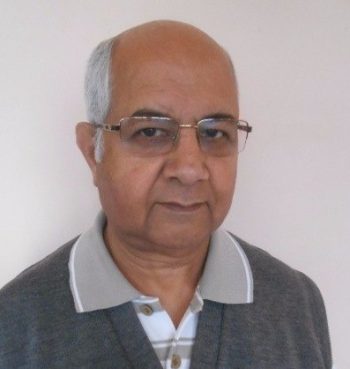By C M Paul
Shillong, March 29, 2024: Delegate for Legal Aid and former teacher of Canon Law at Sacred Heart College Mawlai Shillong Salesian Father Anthony Lendakadavil spoke to Matters India March 29 about the process the Catholic Church follows in investigating alleged Eucharistic Miracles.
Father Lendakadavil says, “The Catholic Church investigates alleged Eucharistic miracles through a rigorous and standardised process involving forensic pathologist, theological and scientific experts.”
“The Church does not accept every alleged Eucharistic miracle,” says the Salesian priest. “After careful investigation, if a supposed miracle turns out to be no miracle at all, this is considered a service to the truth,” he asserts.
Stating the record straight he adds, “However, the Church recognizes that throughout history, there are miracles that are so well-authenticated that their truth cannot be denied.”
For a phenomenon to be recognized as Eucharistic miracle the Church requires “certain evidence” for the fact of the miracle, based on the knowledge and truthfulness of the witnesses who testify to its occurrence. The miraculous character of the event must be such that natural forces alone could not have produced it, and the only rational explanation is the intervention of Divine agency.

Second, the bishop must state that something highly unusual has happened. Third, the bishop must convene a scientific panel with a principal scientist, credible experts and tests. Fourth, the scientific tests must all be in agreement.
In the case of Dimapur miracle, parish priest Father Johnson Vadakkapurathan has followed the standard procedure of securing the chain of custody by placing the host in a container with holy water and keeping it in the tabernacle.
After preliminary examination of the phenomenon, the parish priest has duly contacted local Bishop James Thoppil of Kohima who has taken custody of the miracle host on March 27.
Now Bishop Thoppil can begin a more formal investigation if he believes one is warranted.
At this point, the miraculous host would be photographed.
“When it comes to Eucharistic miracles,” Father Lendakadavil explains, “the majority of them have to do with hosts that have turned to flesh or appear to have blood in them.”
In the Dimapur case there appears to have been a tissue formation with blood. This case will require the bishop to put together a team of investigators with various expertise, like forensic pathologist, theologians and canon lawyers.
Along with analyzing all relevant physical evidence, witnesses such as priest, sacristan, Eucharistic ministers, Baptist woman who took the communion and her friend, and parishioners are interviewed. The scientific team also needs to certify the chain of custody, to ensure no other substance was added to the Eucharistic Host.
After all the evidence has been collected and examined, the head of the scientific team writes up a report. If the final conclusion is that what happened is scientifically inexplicable, everyone on the team has to assent.
Following the scientific investigation, the local bishop convenes a theological commission to ensure nothing in play contradicts Church doctrine, before reaching a final judgment about the alleged miracle’s authenticity.
“Ultimately, it is the bishop who must make a decision. Sometimes, the Vatican is consulted, but the final decision is with the bishop,’ Father Lendakadavil said.
Three of the best-known, Church-approved Eucharistic miracles that have occurred were in Lanciano, Italy, in 750; Buenos Aires in 1992, 1994 and 1996; and Sokolka, Poland, in 2008. In all three cases, modern scientific testing indicated that the Hosts involved have been transformed into human tissue.

